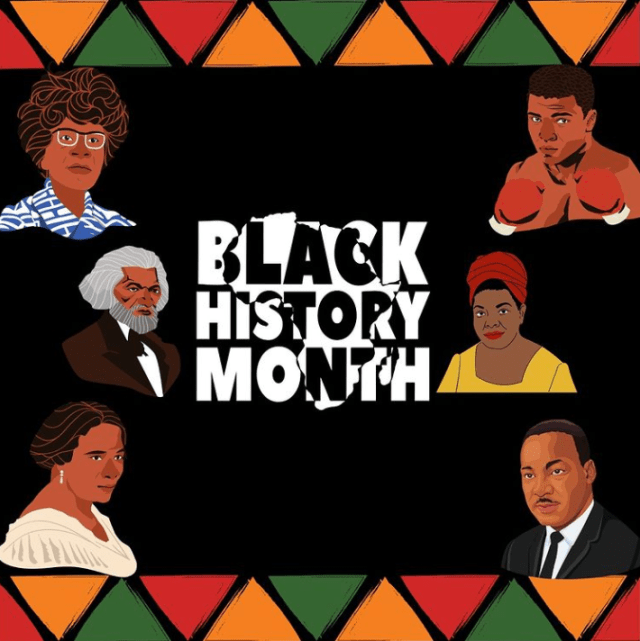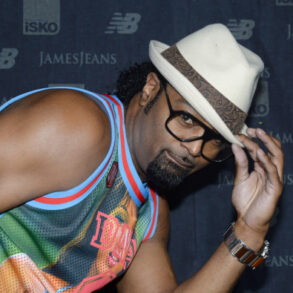
Dr. Jeffrey Ogbonna Green Ogbar is a history professor and the director of the Center for the Study of Popular Music at the University of Connecticut. He offered a lecture on the genius of hip-hop to close off the end of Black History Month on Thursday, Feb. 29.
Entering the Student Union theater, the audience was greeted with a mix of hip-hop songs throughout the decades courtesy of DJ MoreLifee.
Residential Life employee James Walker took the stage to introduce himself. He then gave the podium to Denardia Amponsah-Amfo, who delivered the land acknowledgment with an added clause about the harm that American colonialism dealt to Indigenous American and African identities.
Walker then gave a recap of what new occurrences happened at UConn this Black History Month, those being that there is a new director of the African American Cultural Center and that this is the first year where there are learning communities for both Black women (BSOUL) and men (ScHOLA²RS). Jeffery Hines took to the podium to center the conversation on celebrating Black history year-round instead of just pigeonholing it to a single month.
UConn ENCORE performed a short but incredibly sweet hip-hop dance to what DJ MoreLifee played. A group of women then made a semicircle on stage and rapped to segments of multiple hip-hop songs including “U.N.I.T.Y.” by Queen Latifah, “Doo Wop (That Thing)” by Ms. Lauryn Hill, “Brenda’s Got A Baby” and “Changes” by 2Pac. The energy was infectious and enjoyable. You could tell the performers were having fun and that they loved hip-hop.
Terrence Abney then introduced Ogbar, stating that he was born in Chicago yet raised in Los Angeles, and that his book “Hip-Hop Revolution: The Culture and Politics of Rap” won the W.E.B. Du Bois Book Prize in 2008. He has been teaching at UConn since 1997.
Ogbar began the official lecture by contextualizing the origins of hip-hop. It began in 1973 in the South Bronx. The Bronx was viewed by some to be a “dystopian society” due to the extreme amount of poverty there. The Black and Brown kids in The Bronx created hip-hop to entertain themselves according to Ogbar.
Ogbar likened hip-hop to a four-legged chair, meaning that the four pillars of hip-hop are the MC, the DJ, the breakdancer and the graffiti artist. “The most visible part of hip-hop is the MC,” he claimed.
After acknowledging how many genres of music were pioneered by the African American community, Ogbar defined genius with the help of the Merriam-Webster Dictionary and philosopher David Hume as someone or something that is disconnected from society with intellectual and creative prowess. He then showed a quote by Arthur Schopenhaur “Genius hits a target no one else can see.”
Ogbar then shifted the focus to the detractors of hip-hop, saying that the detractors of hip-hop are parallel to the detractors of jazz. He mentioned his back and forth with John McWhorter, who believes that “hip-hop creates nothing” as well as others who argue that the artform is “crude, vulgar, un-loving, homophobic, anti-social, anti-intellectual [and] misogynistic.” Ogbar juxtaposed these statements with the definition of confirmation bias.
Ogbar played a guessing game with the audience in which the audience had to guess if the quote was from an MC or a famous poet. The most surprising one was that a quote containing the word “shooters” was a Shakespearean quote, as most believed the quote was more contemporary. The point of this game was to prove that hip-hop is a valid and eloquent form of expression just like poetry. “While rap is an established form of poetry, there are aesthetic differences,” Ogbar said.
To end the lecture, Ogbar showed a website where rappers’ vocabularies were compared to Shakespeare’s and Moby Dick’s. He reflected on how some rappers were good at making hooks like DMX and Drake and that is the reason why they were placed on the lower end of the chart. He then reflected on the importance of the higher ranking MF DOOM, saying “MF DOOM is one of the most underrated rappers of all time,” and that he had a vivid imagination.
There was a short Q&A session where a question was asked about gentrification and the evolution of hip-hop, to which Ogbar recommended Lance Freeman’s book “There Goes the ‘Hood” for the former question due to its analysis of data surrounding gentrification and surprising results. Ogbar stated that horrible conditions shouldn’t be preserved for the sake of art and that poorer families tend to move more often. “It just so happens that beauty can sometimes evolve out of ugliness,” he said.
Following the event was a book sale and signing for two of Ogbar’s books outside of the theater as well as a reception in the ballroom with food.
This post was originally published on this site be sure to check out more of their content.





